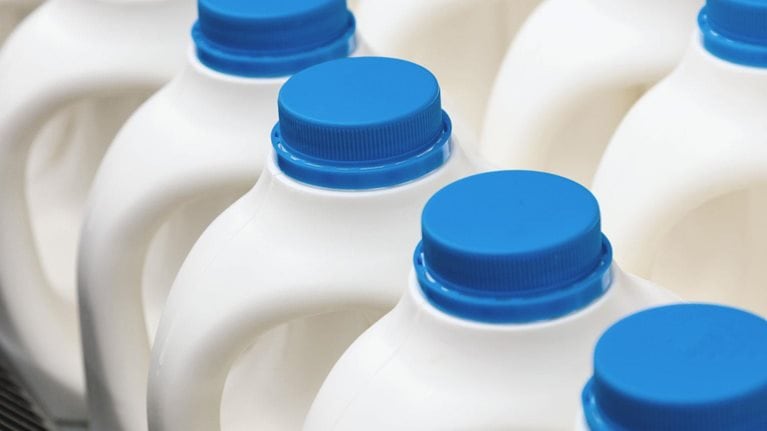The North American dairy industry has faced considerable volatility in volumes and prices in recent years, and 2020 is no exception.1 Indeed, the trend has accelerated, as swings in volume and pricing are happening over ever-shorter periods. Over an eight-week period starting in May, US cheddar cheese block hit a record high price of $2.65 a pound and traded as low as $1.20 a pound. In the preceding twelve-month period, the range was $2.16 to $1.10 (exhibit).

Dairy production has increased every year since the record-high average all-milk price in 2014, and despite the supply increase, producers were optimistic that margins in 2020 would be meaningfully higher. Feed-price stabilization and government-assistance initiatives—including the US Dairy Margin Coverage Program2 and the second phase of the Canadian Dairy Farm Investment Program3—drove expectations for improved margins. Then the COVID-19 outbreak sparked concerns about the novel coronavirus’s impact on human lives and the severe economic downturn that could result from a prolonged battle with the virus. In this article, we will examine the headwinds and tailwinds that the industry is experiencing and recommend five actions executives could take to ensure their businesses’ future.
Impact of the crisis
The headwinds and tailwinds appear to affect all consumer dairy segments except shelf-stable dairy milk.4
Headwinds
A survey of North American dairy industry executives highlights demand as the biggest change resulting from the COVID-19 crisis.5 Reduction in demand has particularly affected the food-service industry, which consumes about one-third of the US dairy industry’s milk solids. In April 2020, the US food-service industry’s consumption of milk by volume was down more than 60 percent,6 leading some co-ops to enforce caps on milk collection and initiate milk dumping, estimated at 1 to 2 percent of April’s production.
However, the impact of this downturn varies across the value chain. Maintaining volumes required processors to switch production capability proportionally to their food-service loss, which could not always be done. Some achieved this pivot through maximizing retail line utilization by consolidating formulas and reducing the number of SKUs. A few processors shifted production from food service to retail. In the United States, the oversupply may have resolved itself in May, as the food-service business started to come back and fill depleted pipelines; additionally, the Department of Agriculture went forward with its lunch box program’s purchase of dairy products.
Tailwinds
Shifts in consumer behavior due to COVID-19, including increased adoption of digital channels and movement in offline channels, have given a boost to some industry categories.
Given the stay-at-home restrictions across most states and provincial regions, online purchases have increased across many industries, including grocery. Since the onset of COVID-19 in North America, overall, grocery delivery is up 22 percent, followed by a 21 percent rise in buying online for in-store pickup.7 Foods from the “perimeter”8 are now part of the standard online shopping cart, including dairy, which has broken through the digital-buying barrier and will likely stay there. Category growth across Amazon platforms underscores this trend, with year-over-year growth in frozen dairy (up 258 percent), liquid dairy (up 174 percent), and other dairy products (up 103 percent) in the eight weeks ending May 2, 2020, compared with the same period in 2019.9
The use of offline channels is shifting toward value offerings such as club, dollar, and discount retailers. According to a US consumer pulse survey conducted in mid-May, net intent to purchase was up 13 percent for club, 5 percent for dollar, and 1 percent for discount grocers.10 These channel shifts may further strain margins, depending on dairy category. In a recent pulse survey of North American dairy executives, 55 percent of respondents reported a decrease in margins year to date while only 13 percent reported margin increases for 2020.11 In that same survey, 68 percent of respondents reported believing that the effects of COVID-19 would last more than six months (up from 39 percent in a pulse survey conducted two weeks earlier).
Actions to consider
We offer five actions dairy executives can take in response to demand shifts and changes in consumer behavior:
- Capitalize on the momentum of a category gaining renewed popularity with consumers, reset where-to-play choices, and ensure that products (whether packaging or formula) are fit for online channels.
- Accelerate plans to roll out digital and advanced analytics capabilities that support the shift to digital and capture the evolving dairy consumer. Consumers are not only increasing their online purchases; they are also consuming more online content.
- Reallocate resources to anticipate channel and format shifts and create value in the places where consumers will be shopping. This might mean actively pursuing relationships with retailers, including partnering with them on assortment changes.
- Design products for new occasions—for example, with consumers’ new at-home reality in mind. Understanding how the COVID-19 pandemic is affecting consumer habits and preferences for the industry as well as for a specific category can help inform new product features and innovation.
- Invest, don’t retreat. Agility will be essential in the next normal. Companies will certainly adjust for the health and financial impacts of COVID-19. Where possible, however, companies should continue investing in consumer-engagement strategies, including marketing and communications.
The next months could reveal more information about the future of the dairy industry, especially which consumer trends will stick around after the immediate impact of COVID-19 and how companies can adapt to changing consumer demand, sentiments, and behavior. Now is the time for dairy executives to reflect on their next steps and then act with urgency.


